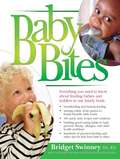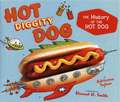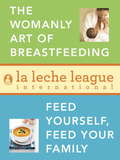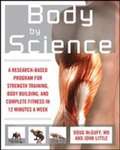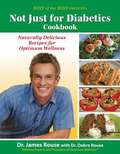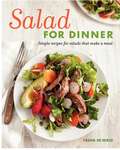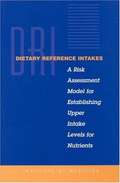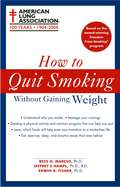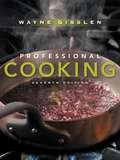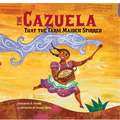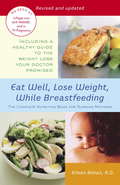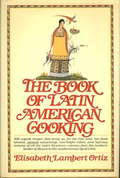- Table View
- List View
Breweriana
by Kevin KiousThough beer is one of the oldest beverages around, beer can collecting--particularly in the United States--really picked up steam in the 1930s when beer in cans first appeared. Since then, beer can collecting and breweriana has become vastly popular, with a variety of clubs and associations springing up across the country and around the world. Brewery collectibles became especially popular in the 1970s, and today breweriana remains a popular pastime, especially with the onset of the microbrew revolution. Author Kevin Kious explores the history of beer and collecting in Breweriana. Kious looks at the evolution of beer cans, paper advertising, packaging, and signage, as well as how Prohibition affected the industry in the 1920s and early 1930s and how consolidation changed things in the 1970s. Breweriana will be of interest not only to beer lovers but also to readers with an interest in advertising, packaging, and signage.
Baby Bites
by Bridget SwinneyThis book helps parents with everything they need to know about feeding babies during the first three years--including breastfeeding, bottle-feeding, purÉed baby food, teething foods, and solids--making it the most comprehensive baby nutrition book on the market. It helps parents understand their baby's nutritional needs and enables them to prepare tasty food so their baby can develop healthy eating habits. It's part nutrition book, part cookbook, and a complete godsend for parents. Baby Bites is an iParenting Excellent Parenting Product Award winner!
Diners, Drive-ins and Dives: An All-American Road Trip ... with Recipes!
by Guy Fieri Ann VolkweinFood Network star Guy Fieri takes you on a tour of America's most colorful diners, drive-ins, and dives in this tie-in to his enormously popular television show, complete with recipes, photos, and memorabilia. Packed with Guy's iconic personality, Diners, Drive-ins and Dives follows his hot-rod trips around the country, mapping out the best places most of us have never heard of. From digging in at legendary burger joint the Squeeze Inn in Sacramento, California, baking Peanut Pie from Virginia Diner in Wakefield, Virginia, or kicking back with Pete's "Rubbed and Almost Fried" Turkey Sandwich from Panini Pete's in Fairhope, Alabama, Guy showcases the amazing personalities, fascinating stories, and outrageously good food offered by these American treasures.
Hot Diggity Dog: The History of the Hot Dog
by Adrienne Sylver Elwood H. SmithThe history and fun facts about hot dogs.
The Everything Calorie Counting Cookbook
by Paula Conway Brierley E. WrightBased on a 1,200-calorie-a-day diet, The Everything Calorie Counting Cookbook features 300 mouth-watering recipes for every occasion, from super suppers to sensible snacks.
The Book of Burger
by Rachael RayThe ULTIMATE collection: Over 200 recipes for burgers, sliders, sloppies, fries, and sides.The Queen of Burgers has drawn together her tastiest recipes for the ultimate between-the-buns experience. Whether you're cooking for one or for one hundred in your own backyard burger bash, The Book of Burger has you covered for bringing family and friends together for the love of burgers! Please 'em all--big and small--with everything from burgers to sandwiches, hot dogs, fries, sliders, and sloppies, and so much more. Start with Rach's "Big Spicy Mac," tempting you from the cover, or go with the heavenly French Onion Burgers. And if beef isn't your thing, there are plenty of chicken, pork, salmon, veggie, and lamb patties. Want a mind-blowing sandwich? Whip up the BEST one Rachael has ever made: the 7-Hour Smoked Brisket Sandwich with Smoky BBQ Sauce. Rachael even shares her legendary pickle recipe and her own homemade burger blend. Want a fun, cute, tasty bite-size treat to pass around? Rachael is slider obsessed and you will be, too: try the Mexican Pulled Pork Sliders. Rachael's friends from the New York and South Beach Wine & Food Festivals' Burger Bashes also contribute their award-winning recipes, including Bobby Flay's Louisiana Burger and Masaharu Morimoto's Kakuni Burger. Twelve original videos (directly accessible by links throughout the text) make The Book of Burger a truly multimedia experience and a smart book that celebrates the infinite possibilities of everybody's favorite food.
La Leche League 2-Book Bundle
by La Leche League InternationalDedicated to supporting nursing and expectant mothers, the internationally respected La Leche League has set the standard for educating and empowering women in the natural art of breastfeeding for generations. Now this two-volume eBook bundle provides a comprehensive one-stop guide for all your nourishing needs, from pregnancy to breastfeeding through weaning and beyond. THE WOMANLY ART OF BREASTFEEDING From pregnancy to weaning, the one book every nursing mother needs by her side This classic bestselling guide has been recently retooled, reorganized, and updated for today's mothers and lifestyles. Working mothers, stay-at-home moms, single mom, and mother's of multiples will all benefit from the range of nursing advice stories and information--from preparation during pregnancy to the world of weaning, from nursing positions to expressing and storing your milk. The Womanly Art of Breastfeeding provides answers to the most-asked questions--and to questions you didn't even know you had. There is no better beginning for your baby than this ultimate support resource. FEED YOURSELF, FEED YOUR FAMILY Good Nutrition and Healthy Cooking for New Moms and Growing Families Featuring more than seventy-five easy-to-make and delicious recipes, sanity-saving, mom-tested advice, and vital information about your nutritional needs when pregnant, nursing, or weaning, Feed Yourself, Feed Your Family helps you set your family on a course for a lifetime of healthy eating. You'll find tips on stocking your fridge and pantry for simple meals in minutes, fun ways to get children involved in the kitchen, info for safely shedding pounds while breastfeeding, and candid, affirming stories from mothers just like you.
Thendral: Vol 12, Issue 09, August 2012
by MadhurabharathiThis issue features interviews of Prof. George Heart and‘Bharathi’ Mani; Two Recipes; Biography of Carnatic Musician Madurai Mani Iyer; a religious article on “Annai Abirami”; Three Short Stories; Kavithai Pandal (Poem); Biography of writer Hephzibah Jesudasan with an abstract of her novel plus usual features of Thendral Pesukirathu, Anbulla Snehitiye, Ilanthendral, Nalam Vaazha, Surya Thupparikiraar, Saadhanaiaalar, etc.
Body by Science: A Research-based Program for Strength Training, Body Building, and Complete Fitness in 12 Minutes a Week
by John R. Little Doug McguffBuilding muscle has never been faster or easier than with this revolutionary once-a-week training program. In Body By Science, bodybuilding powerhouse John Little teams up with fitness medicine expert Dr. Doug McGuff to present a scientifically proven formula for maximizing muscle development in just 12 minutes a week. Backed by rigorous research, the authors prescribe a weekly high-intensity program for increasing strength, revving metabolism, and building muscle for a total fitness experience.
Adventures in Food and Nutrition!
by Carol Byrd-BredbennerIntroduce your students to food and nutrition with Adventures in Food and Nutrition! Packed with student appeal, this full-color text generates student interest with action photos, interesting activities, and real-world experiments. The text encourages students to develop scientific and inquiry skills as they learn about nutrition, food management, and preparation. The text is written at a lower level for younger students or beginning level classes. -- Multicultural focus, reflecting foods from a cross section of diverse backgrounds. -- Math and science applications and activities are provided throughout the text and in special-interest features. -- Involves students in the science and creativity of preparing meals and snacks. -- Chapters include Objectives, New Terms, Review Questions, Application Questions, Activities, and a Summary.
Best of the Best Presents: Naturally Delicious Recipes for Optimum Wellness
by Debra Rouse James RouseThis is another book in the Best of the Best Presents collection. And, like the other cookbooks, it features easy-to-follow instructions for tasty main courses, salads, desserts, condiments, soup and more. Although the emphasis is on healthy eating, the ingredients are familiar and the results are delicious! Other Best of the Best cookbook are available in this library.
Recipe for Trouble
by Sheryl Berk Carrie BerkMeet Lexi Poole. To Lexi, a new school year means back to baking with her BFFs in the cupcake club. But the club president, Kylie, is mixing things up by inviting new members. And Lexi is in for a no-so-sweet surprise when she is cast in the school's production of Romeo and Juliet. If only she could be as confident onstage as she is in the kitchen. The icing on the cake: her secret crush is playing Romeo. Sounds like a recipe for trouble. Can the girls' friendship stand the heat, or will the cupcake club go up in smoke?
Salad for Dinner: Simple Recipes for Salads That Make a Meal
by Tasha DeserioSalad for lunch? Salad for dinner? It's easy - and delicious - to turn salads into main meals with this original collection from chef Tasha DeSerio. As more and more home cooks are looking to eat healthy using local and regional offerings, the whole-meal salads highlighted here will satisfy vegetarians and meat-eaters alike. Simple, yet sophisticated and showcasing the author's talent for presenting beautiful ingredients in an artful way, the recipes encompass everything from greens to meat and fish, dairy, and pasta and grain. With detailed information on in-season fruits and vegetables, lesser-known salad fixings, preparation techniques (including make ahead tips), and a comprehensive chapter on salad basics, readers will have all they need to turn out satisfying and beautiful salads of their own. Easy enough for one and special enough for a crowd, salads as a main course will be showing up on tables everywhere.
Katie and the Cupcake War
by Coco SimonKatie finds the courage to face off with a former friend in this addition to Spotlight's sweet treat of a tween series.Katie and Callie used to be best friends--until Callie ditched Katie so she could join the Popular Girls Club. And even though Katie is now very happy with her Cupcake Club friends, Callie's mean move still bothers her. Finally, Katie finds a way to confront Callie...but it's going to take lots of sweet-talking to repair the friendship.
My Father's Daughter: Delicious, Easy Recipes Celebrating Family And Togetherness
by Gwyneth Paltrow Mario BataliThe Academy-Award winning actress and avid foodie shares a sumptuous collection of recipes and gorgeous photographs celebrating the joy of preparing food for loved ones, a passion she learned from her beloved father. As an actress, author, trendsetter, creator of goop. com, and host of the popular PBS series,Spain: On the Road Again, Gwyneth Paltrow is an icon of style and good taste around the world. As a young girl eating and cooking with her father, Bruce Paltrow, she developed a passion for food that has shaped how she lives today and strengthened her belief that time with family is a priority. Now in MY FATHER'S DAUGHTER, Paltrow shares her favorite family recipes along with personal stories of growing up with her father, Bruce Paltrow. She discusses how he has influenced her in the food she loves, how she involves her kids in cooking, and how she balances healthy food with homemade treats. And, for the first time, Paltrow offers a glimpse into her life as daughter, mother and wife, sharing her thoughts on the importance of family and togetherness. Complete with 150 delicious ideas for breakfast, sandwiches and burgers, soups, salads, main dishes, sides, and desserts, MY FATHER'S DAUGHTER is a luscious collection that will inspire readers to cook great food with the people who mean the most to them.
Dietary Reference Intakes: A Risk Assessment Model for Establishing Upper Intake Levels for Nutrients
by Food Nutrition BoardInformation on Dietary Reference Intakes
How to Quit Smoking Without Gaining Weight
by The American Lung AssociationDo you rely on smoking to keep your weight in check? Are you afraid to quit smoking because you're worried about gaining weight? Have you gained weight after quitting smoking...and gone back to smoking with hopes of losing the weight? If you answered YES to any of these questions, it's time to learn HOW TO QUIT SMOKING WITHOUT GAINING WEIGHT Based on the American Lung Association's smoking cessation program, here is expert advice on how to quit smoking in a healthy way that allows you to kick the habit without ruining your waistline. This groundbreaking book will show you: How quitting smoking can add years to your life Why vegetables and fruits are the most important foods to eat while you're quitting How to add more physical activity to your day Which foods to turn to during a nicotine craving How to stay motivated, even during tough times ...and dozens of other strategies that can help you to work with your cravings -- instead of against them -- to attain a healthy and fit smoke-free life. Includes meal plan suggestions, recipes, and snack ideas!
Professional Cooking (7th edition)
by Wayne Gisslen Mary Ellen GriffinThis is the best-selling undergraduate food preparation textbook in the marketplace. It has a long standing reputation for being comprehensive, yet easy for students to understand and follow. Wayne Gisslen's reputation for being able to simply, yet comprehensively, communicate information to beginning chefs is unsurpassed. Professional Cooking, Seventh Edition includes videos that will help further illustrate the correct techniques in the kitchen. On top of that there are over 100 new recipes, some with particular emphasis on international cooking. Enhanced visual program includes over 220 new color photos, including plated dishes, procedures, and products. Approximately 100 new recipes have been added, for a total of 650 recipes plus another 600 variations. More focus on international recipes and variations. Enhanced topical coverage on such things as: food science, molecular gastronomy, international recipes, and culinary maths. Chapter 10, Understanding Meats, now includes all information on meat fabrication in one convenient place. Up-to-date nutrition guidelines. Thoroughly revised and enhanced CulinarE-Companion Recipe Management software contains all recipes from the book - and 90 bonus recipes. The software is available through download with the registration code in the back of the book.
Hungering for America: Italian, Irish, and Jewish Foodways in the Age of Migration
by Hasia R. DinerMillions of immigrants were drawn to American shores, not by the mythic streets paved with gold, but rather by its tables heaped with food. How they experienced the realities of America's abundant food--its meat and white bread, its butter and cheese, fruits and vegetables, coffee and beer--reflected their earlier deprivations and shaped their ethnic practices in the new land. Hungering for America tells the stories of three distinctive groups and their unique culinary dramas. Italian immigrants transformed the food of their upper classes and of sacred days into a generic "Italian" food that inspired community pride and cohesion. Irish immigrants, in contrast, loath to mimic the foodways of the Protestant British elite, diminished food as a marker of ethnicity. And, East European Jews, who venerated food as the vital center around which family and religious practice gathered, found that dietary restrictions jarred with America's boundless choices. These tales, of immigrants in their old worlds and in the new, demonstrate the role of hunger in driving migration and the significance of food in cementing ethnic identity and community. Hasia Diner confirms the well-worn adage, "Tell me what you eat and I will tell you what you are. "
The Cazuela That the Farm Maiden Stirred
by Samantha R. VamosWhen a farm girl starts cooking, all the animals want to help. The cow contributes milk, the hen offers eggs, and even the duck makes a special trip to the market. Key English words change to Spanish as the story builds to a delicious ending.
Eat Well, Lose Weight, While Breastfeeding
by Eileen BehanThe new mom's most trusted resource-now revised and updated to include the latest in nutrition and dietary concernsThis hands-on guide provides mothers with expert advice on losing weight and eating well, so you can feel good about your decision to nurse. Registered dietitian, professional nutritionist, and mother of two Eileen Behan shows you how to shed pounds safely and naturally while nourishing a happy, healthy baby. Learn what and how much to eat, what foods to avoid, the best exercises, plus ways to keep the pounds off after you stop breastfeeding. Get the latest on:* vitamin and mineral recommendations from the frontlines of nutrition research* the Glycemic Index-what it is and what it means to breastfeeding women * fish safety-what you need to know about toxin levels to protect you and your baby* low-carb diets-good or bad for breastfeeding moms?* calcium-does it speed up weight loss?* whole grains-the best ways to integrate this ultimate energy food into your diet* nuts-high-protein food or fattening snack?* childhood obesity-how to prevent harmful eating habits, from breastfeeding through toddler years* sugar substitutes-which ones are best?PLUS-All new crock-pot recipes, more Web-based resources, and a breakthrough eating plan that allows mothers to eat well, lose weight naturally, and have a happy nursing experience.
The Book of Latin American Cooking
by Elisabeth Lam OrtizThis award-winning cookbook by Elisabeth Lambert Ortiz includes 500 recipes from the exotic culinary traditions of the Latin American World, covering the coasts, mountainous areas, and fertile plains between Mexico and Chile. Ortiz selects appetizers, soups, main courses, salads, and desserts from each region and explores the wild array of spices and styles that make these recipes unique. Using delicious examples, she describes how the Spanish, Portuguese, African, and Middle Eastern influences have combined with the indiginous cooking of the Maya, Aztec, and Inca civilizations. Her recipes range from familiar favorites such as Guacamole and Feijao Preto (black beans), to more unusual recipes: Sopa de Topinambur (Jerusalem Artichoke Soup -- Chile), Matambre (Stuffed Rolled Flank Steak -- Argentina), Pichones con Salsa de Camarones (Squab in Shrimp Sauce -- Peru), Salada de Palmito (Hearts of Palm Salad -- Brazil), Quimbolitos (Steamed Puddings -- Equador), as well as a wide variety of sauces and breads. This book is the prototype for all books on Latin American cooking and remains the definitive text on the subject.
Thendral: Vol 12, Issue 10, September 2012
by MadhurabharathiIn addition to the regular features viz., Thendral Pesukirathu, Anbulla Snehitiye, Surya Thupparikiraar, and Ilanthendral, this issue features interview with Poet Manushyaputhiran and Playback singer Mahati; Recipes of Kancheepuram Idly and Moongdal Idly; Biography of Tamizhkadal Raya. Chockalinganaar; Biography of Journalist/novelist Tamilvaanan with one of his published shortstories; a religious article on ‘Erikaatha Ramar’; obituary of Captain Lakshmi Sehgal and Ra.Ki. Rangarajan; two short stories; a travelogue on Kollimalai; Poetry, etc.
The Only Wine Book You'll Ever Need
by Danny MayWhether looking to build their own personal wine cellar or to brush up on serving wine, readers learn such essential information as what makes a good wine good, which flaws to watch for in wines, and how to choose the right wine for the right occasion for the right price.
Simply Smoothies
by Delia QuigleyThe milkshakes of the new millennium, smoothies can be made in varieties ranging from healthy to hearty, from decadent to dairy-free. In this handy book, chef and nutritional consultant Delia Quigley provides 200 recipes plus directions for making the perfect smoothie.

